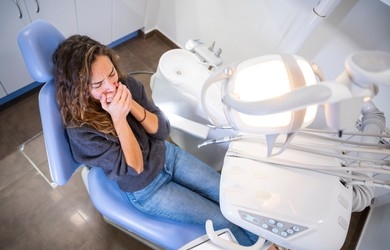Baby Teeth
Baby teeth are referred to as primary teeth. Development of primary teeth in babies begins in the womb itself.
The fifth week of gestation is the time when the first buds of primary teeth appear in the baby’s jaws. At the time of birth, babies are born with a full set of 20 primary teeth (10 in the upper jaw, 10 in the lower jaw).
These primary teethes remain hidden under the gums. Primary teeth are also known as baby teeth and milk teeth.
Stages of Teething
The exact timing of teething varies from child to child. Babies begin teething around 6 months of age.
The front two teeth of the top and bottom( central incisors) emerge first. Teething is a painful and difficult process for both babies and parents.
Infants become cranky when their new teeth emerge.
Signs and symptoms of teething :
1. Irritability or fussiness
2. Excessive Drooling
3. Sore or sensitive gums
4. Diarrhea
5. Fever
Types of teeth
- Incisors: They are the front teeth located in the upper and lower jaws. Each incisor has a thin cutting edge. The upper and lower incisors come together. They act like a scissor that helps to cut the food.
- Canines: They are pointy teeth that come after incisors. Canine comes on both sides of the incisors in the upper and lower jaws. It is mainly used to tear the food.
- Premolars: they are flat teeth having flat surfaces to crush food.
- Molars: these are larger than premolars towards the back of the mouth, with broad, flat surfaces that grind food.
5 Stages of Teething In Children
Stage 1 (0-6 months): Babies are born with a set of 20 primary teeth in jawbones beneath their gums.
During this stage baby’s diet usually consists of milk. These teeth are frequently referred to as “milk teeth”.
Stage 2 (6-8 months): The first teeth emerges at this stage. Lower and upper front teeth(incisors) begin to erupt around 6 months. Signs and symptoms of pain and discomfort become evident before 6 months.
In this stage Prior to teeth eruption, the baby typically tries chewing on toys. Chewing on toys and solid objects helps in easing the discomfort.
Chewing decreases friction between the uneven edges of the teeth which pushes against the gums.
Stage 3 (10-14 months): Primary molars begins erupting in this stage. Teeth come in the back of the mouth in the lower and upper jaws.
Evident drooling happens in this stage. A child becomes more cranky. Continuously they want to chew their toys and hands. it is also very common to experience loss of appetite in babies.
Symptoms like fever and diarrhoea is common. It also affects the baby’s sleep cycle.
Stage 4 (16-22 months): During this stage, the canine teeth (between the top and bottom molars and incisors) surface.
Signs and symptoms persist the same as stage 1 and 2. Giving some semi-solid food for the baby to chew is helpful.
Stage 5 (25-33 months): This is the most painful stage of teething. During this time, the large molars emerge. These are the biggest teeth and it gives a roller coaster ride to both the baby and the parents.
No soothing techniques work here. Many parents find it helpful to give a hard vegetable to chew to the toddler.
Comforting techniques
- Teething rings: Give the teething ring which is made of hard plastic to the baby. The teething ring which has got liquid contents inside has got the risk of leaking.
- Gum massages: Applying pressure to the gums can relieve the discomfort. Massaging gums with a clean damp washcloth alleviates pain. Parents can also use clean fingers and a clean dampened gauze pad.
- Bottles filled with water: Whenever there is pain experienced, sucking on a water bottle is very helpful. Sometimes filling the bottle with juice or milk help in feeding the baby. Continuous exposure to sugary liquids may cause tooth decay.
- Chilled washcloths: A chilled teething ring soothes the baby’s gum and alleviates teething pain. Let the baby munch on these chilled items. Avoid too cold items it can injure the gums and teeth.
- Solid foods: Providing solid food to toddlers can help in reducing the friction between two gums. Chewing relieves teething discomfort. Vegetables like cucumber and peeled carrots are beneficial. Need to be watchful to avoid choking kind of problems.
- Pain remedies: Over-the-counter pain relievers may also help keep a baby more comfortable during teething. Paediatrician suggested medicines are always advisable.
- Drying the drool: Baby’s skin becomes too irritated because of continuous drooling. A sanitized bib or cloth under the baby’s chin soaks all the saliva and keeps the area dry.
Conclusion
Park Dental Clinic, Dwarka Sec-7, Delhi is the best dental clinic in Dwarka having the best dentist, orthodontist, and implantologist. It also caters to all the requirements related to Paediatric Dental Care with personal care.
The dentist here carries the expertise in addressing all types of dental issues and providing comprehensive treatment. We offer a wide range of orthodontic treatments, including metal braces, ceramic braces, and clear aligners with advanced technology along with Paediatric Dental issues.
A one-stop solution for all dental-related issues like Root Canals treatments, dental implants, and braces with the most economical and budget-friendly solutions.
Reference:
https://www.betterhealth.vic.gov.au/health/conditionsandtreatments/teeth-development-in-children
https://www.kidsdentalonline.com/dental-topics/baby-dental-topics/stages-teething-helpful-hints/





